Asset prices in the DeFi space have plummeted since their recent highs. The DeFi Index Perpetual Futures instrument on FTX, which tracks a basket of DeFi assets, is down almost 50% from its high on September 1st:
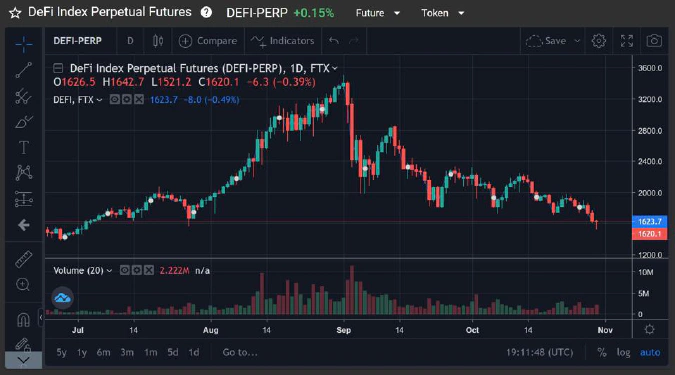
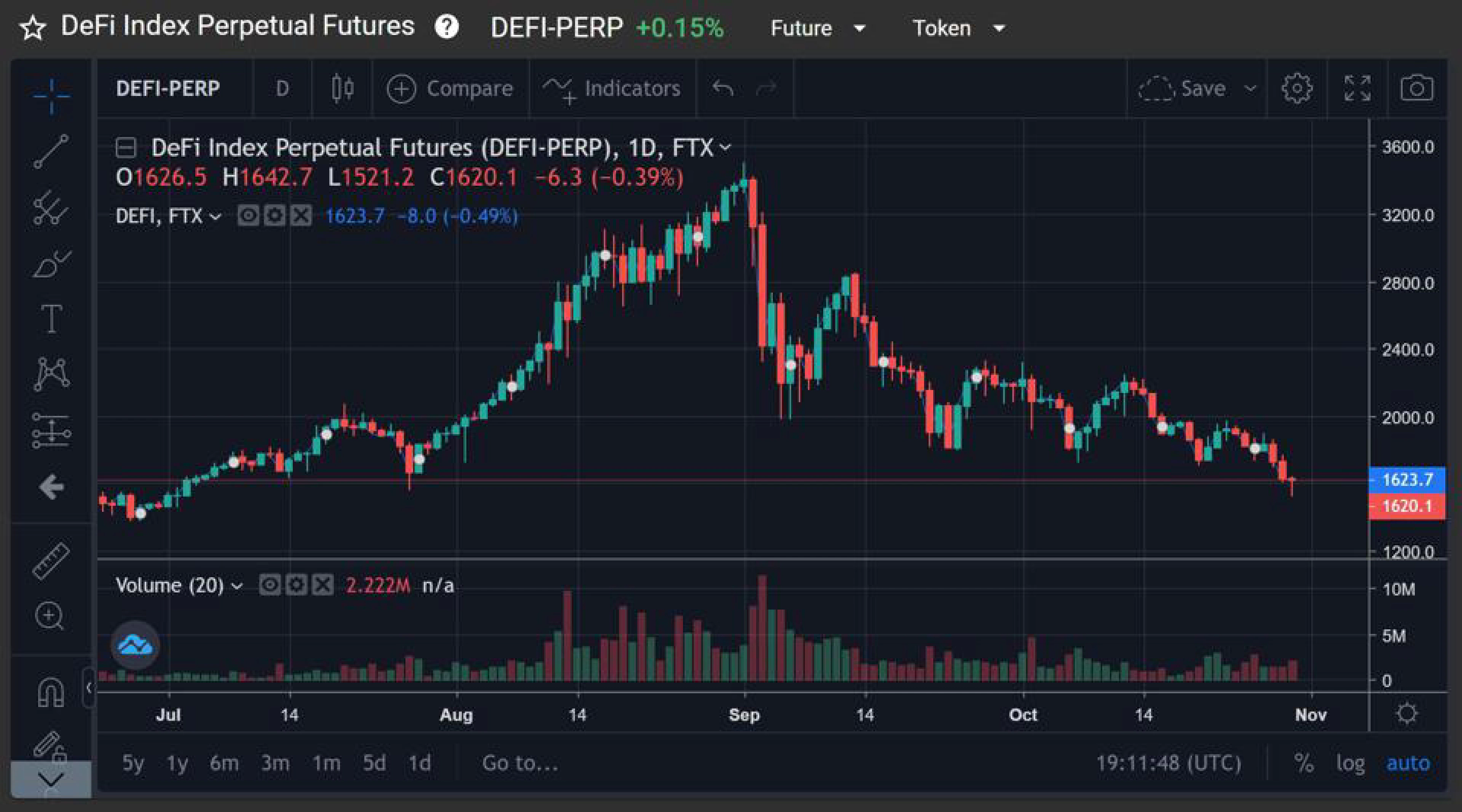
Many individual tokens have fallen even further. Serum (SRM) and yearn.finance (YFI), for example, are down more than 65% from their September 1st prices:
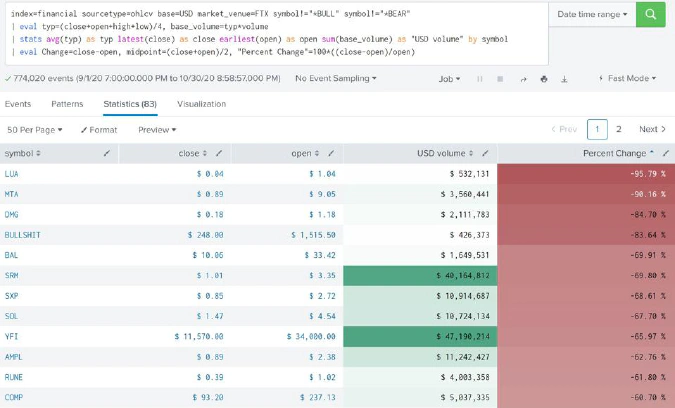
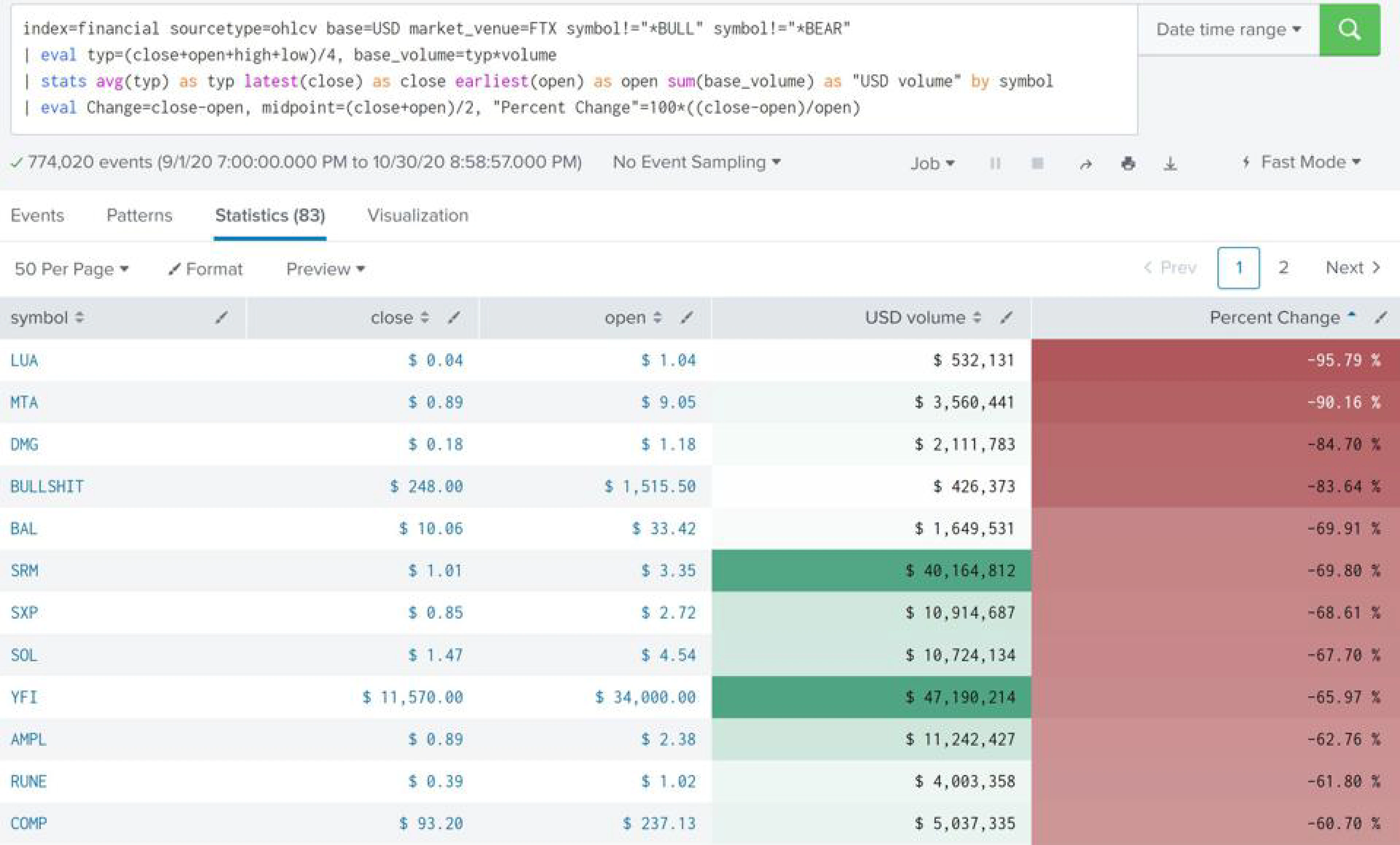
Much of the spectacular run-up was fueled by fast and recklessly speculative investment into extremely new tokens and platforms. And, on the way up, the strategy worked for many.
The self described “DeFi Degens” filled up exchange order-books, on-chain Ethereum transactions, ‘Crypto Twitter’ feeds, and discord channels as fast as junior developers could generate new tokens. Along with DeFi token prices, Ethereum gas prices soared, clogging up the network and pushing out many smaller investors:
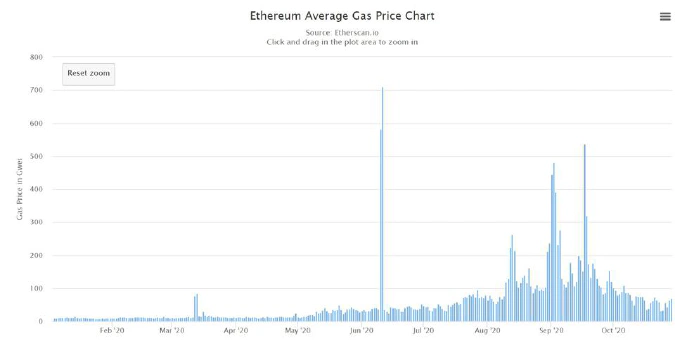
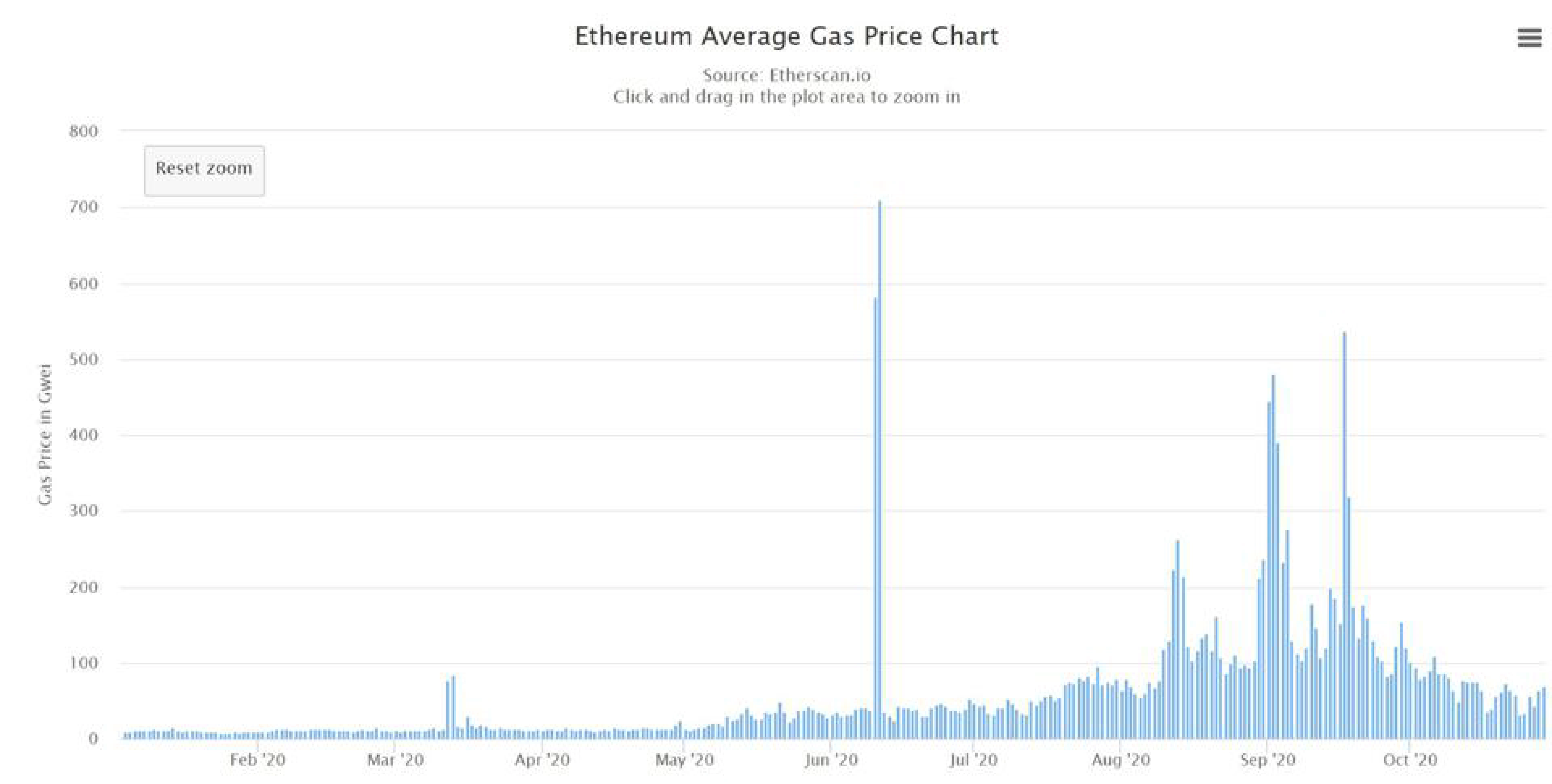
As we saw in the ICO bubble in 2017: by throwing a few hundred dollars into dozens of completely new projects, speculators only needed one or two of them to not completely fail to recoup their investment. This strategy, of course, favors speed and media attention over fundamentals and sustainability.
We saw dozens of copy-cats, pump and dumps, and bug exploits which capitalized on the influx of this nondiscriminatory investing. Also like the ICO boom, however, this influx of inefficient capital helped drive some legitimate development of new decentralized financial legos. Further, despite the crash of many DeFi tokens, the USD amount of value locked in DeFi protocols remains near an all-time high:
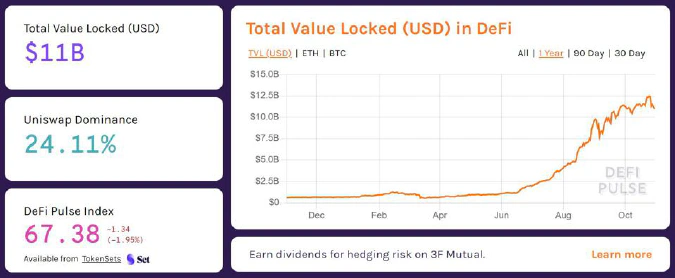
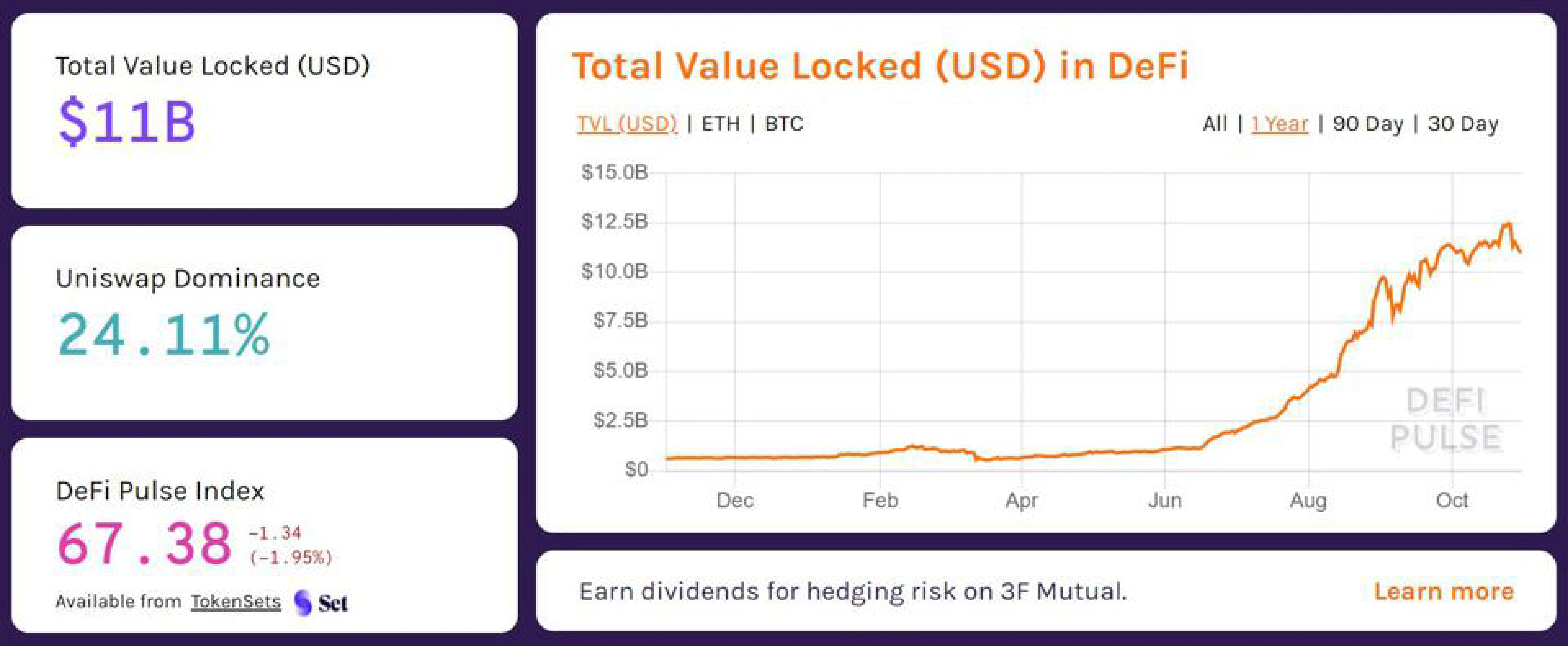
Much of this value locked is in much more conservative mechanisms than those which defined the frantic hype seen in the referenced “ponzinomics” projects. Longer-standing smart contracts, with multiple audits and well defined use-cases, have continued to attract capital. As described in a previous article, Can You Have Your Bitcoin And Eat It Too?, many of these projects focus on decentralized lending and market making.
The decentralized exchange Uniswap, which is the leading DeFi application listed on DeFiPulse by Total Value Locked (TVL) has almost $3 billion in liquidity. The exchange now facilitates hundreds of millions in USD denominated trading volume everyday, with one massive $2.19 billion trading day (likely due to the recent Harvest Finance exploit):


Overall, this drop seems healthy for the broader digital asset space.
We have seen a flush out of many questionable projects and consolidation around more reasonable and sustainable ones.
The Ethereum blockchain has become usable again with lower transaction fees and confirmation times.
Large amounts of capital funded experimental development, allowing the exploration and testing of many interesting financial concepts/products.